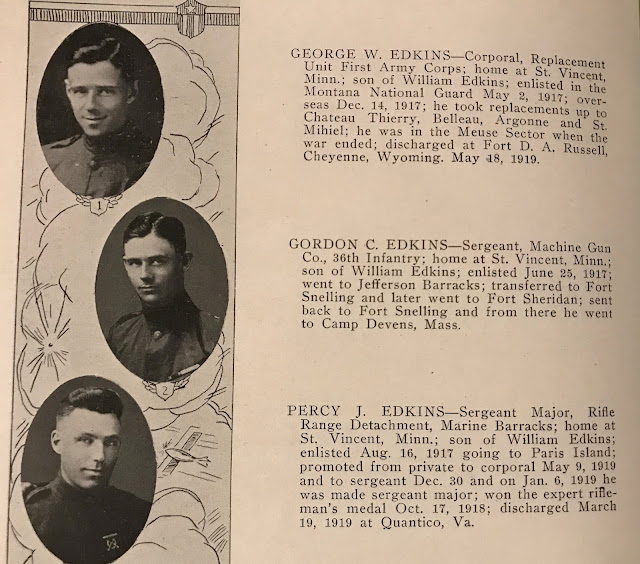 |
| West Lynne, Manitoba townsite, today. |
The Story of West Lynne and the First Customs House in Western Canada
by James McClelland
To say that the oldest federal building in southern Manitoba had a diverse and chequered past would be an understatement. According to the old Winnipeg Telegram, this building was originally built in the 1850s. The design and architecture were similar to buildings found in the Acadian region of Canada. The article describes the building as "20x26, and made from hewn oak timbers, dove tailed at the corners." Later this building would serve as a symbol of Canadian sovereignty and a floodgate against Yankee commerce.
Today it sits just 500m north of the border it guarded for so long.
The line separating the United States from British territory had always been vague and tentative. Agreement that the 49th parallel would record the western boundary was established as early as 1818, but its exact location tended to shift each time a party had been sent out to survey it. Between 1823 and 1870 three different boundary lines had been drawn; all of them controversial.
In the 1840s, agitation began to develop along this line between the free traders from the Red River Settlement and the Hudson Bay Company officials at Fort Garry. In 1843, the first regular cart service between
Pembina and St. Paul was opened. This provided easy access to the American markets. This bickering heightened as more Red River traders sought the higher American prices. It intensified in 1845 when Norman Kittson, an American Trader, opened a store just a scant 4km south of British Territory, at the junction of the Red and the Pembina Rivers.
The door of American commerce was beckoning. In fact, Kittson offered such good prices for fur that the ensuing rush of illegal trade from British Territory was referred to by the HBC as "Kittson’s Fever". As a counter-move in September of 1845, the Hudson Bay Company opened a post called North Fort Pembina. It was located on what they considered their side of the line. The Company put
John Palmer Bourke, a retired officer living in the colony, in charge of this new frontier post.
During the winter of 1845-46, Robert Clouston, an employee from the Stone Fort visited this place. In his journal, he described these Spartan surroundings.
"Mr. Bourke has a rough log house, the walls of which, inside and outside are plastered with clay, and the roof covered with earth - it is floored with rough logs: the men live in the same house, with merely a partition between them - a mud chimney in each room and a door opening from Mr. B's apartment to his trading room"
The following day Clouston visited Kittson's store. The uncertainty of the exact spot where American and British authority met is noted in his diary:
"About quarter of a mile above the house (the HBC store) we saw a post planted by Major Long - marking the boundary at a place called Monroe’s Encampment some wag had pulled up the post of demarcation and placed Uncle Sam's initials toward British territory."
Clouston later reported that Kittson's store was about 3 kms farther south. Here, between Kittson's store and the HBC post, the log house was originally located.
From these squalid beginnings the HBC post at the border continued to develop. A sketch from 1858, shows several log buildings surrounded by a sturdy log palisade.
However, the strip of land between North Pembina and Kittson’s store quickly developed into a "no-man's land." Other buildings sprang up and an unsavory frontier community known as
Huron City was born. A few years later the Lieutenant-Governor of Manitoba would complain to Ottawa about the rowdy brawling atmosphere and the flourishing trade in whiskey smuggling that was going on in this "Whisky Post". By this time, the log building, had been turned into an inn.
Unquestionably, many travelers passed through the doors of this establishment, but two guests in particular played a very important role in the creation of Manitoba. In the autumn of 1869, the Hon. Wm. McDougall, the Governor designate of Rupert's Land, stayed here briefly after he was denied entry into the Red River Settlement by Louis Riel's metis guards. In December, McDougall would return to the deserted post and read a Proclamation declaring himself the official lieutenant-governor of the region. Ironically, in August of the following year, Louis Riel himself found momentary refuge in the same building after his hasty escape from Fort Garry.

On July 1, 1871,
F. T. Bradley arrived to become Collector of Customs. The log building, empty at the time, became Manitoba's first regular Customs House. It also served as a telegraph, express and postal office. Yet, in October 1871, one of the most bizarre events in Canadian history had yet to unfold on these premises.





